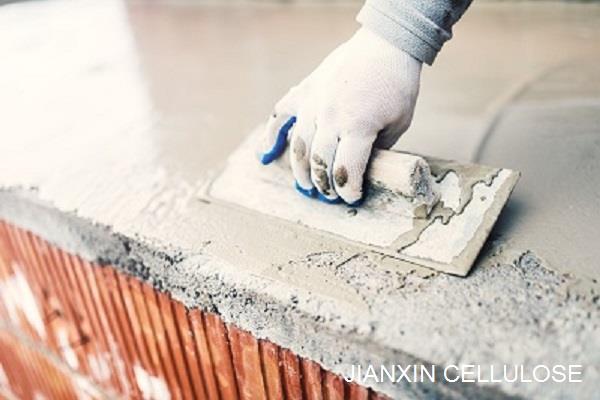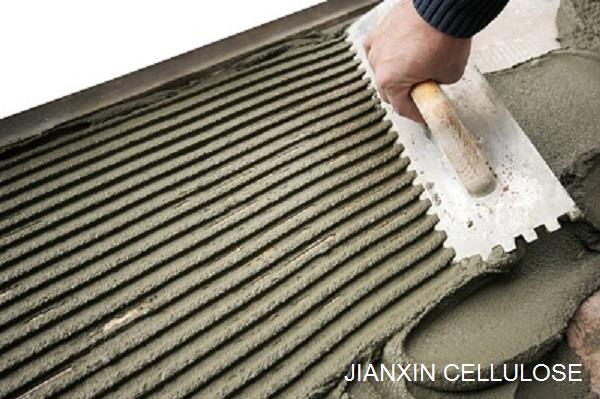Aug. 02, 2022
Hydroxypropyl methyl cellulose (HPMC) is a kind of non-ionic cellulose ether, which is made of natural polymer materials as raw materials and refined by a series of chemical processes. It has a good water retention effect, easy processing, wide viscosity range, and can meet different industrial needs. Mainly used in the construction industry: water-resistant putty powder, putty paste, steel putty, paint glue and masonry mortar, dry powder insulation mortar, and other dry powder building materials. High-quality HPMC can significantly improve the mortar construction performance, pumping, and spraying performance and is an important additive in mortar.
Water Retention: HPMC has excellent water retention properties. When added to mortar, it helps to retain water, preventing premature drying and ensuring adequate hydration of cement. This improves the workability and work time of the mortar, allowing for easier application and reducing the need for constant rehydration.
Improved Workability: HPMC acts as a rheology modifier, enhancing the workability and consistency of mortar. It imparts a more uniform and cohesive texture to the mixture, making it easier to spread, trowel, and shape. This results in improved handling characteristics and better application properties.
Increased Cohesion: By improving the cohesion of mortar, HPMC helps to reduce segregation and bleeding. It enhances the bond between the constituents of the mortar, such as cement, sand, and water, resulting in a more homogeneous and stable mixture. This contributes to better overall performance and durability of the mortar.
Enhanced Adhesion: HPMC improves the adhesion of mortar to various substrates, such as bricks, blocks, or stones. It forms a thin film on the surface, enhancing the bond between the mortar and the substrate. This helps to prevent delamination or detachment of the mortar over time, ensuring long-lasting and secure construction.
Crack Resistance: HPMC imparts improved flexibility and elasticity to mortar, making it more resistant to cracking. It allows for slight movements or shrinkage of the substrate without causing significant damage or cracks in the mortar layer. This helps to maintain the structural integrity and appearance of the finished construction.
Durability: The addition of HPMC to mortar improves its durability and resistance to various environmental factors. It enhances the mortar's resistance to water penetration, freeze-thaw cycles, and chemical attack, thereby increasing its longevity and reducing maintenance requirements.
Versatility: HPMC can be used in a wide range of mortar formulations, including cement-based mortars, lime mortars, and polymer-modified mortars. It is compatible with different types of cement, aggregates, and admixtures, making it a versatile additive for various construction applications.
By incorporating HPMC into mortar, construction professionals can achieve improved workability, water retention, adhesion, cohesion, crack resistance, and overall durability of the mortar. These advantages contribute to high-quality and reliable construction, whether it's for masonry work, tile installation, plastering, or other mortar-based applications.

1. Matecel HPMC has excellent water retention and is widely used in various mortars, including masonry mortar, plastering mortar, and ground leveling mortar, to improve the water leakage of mortar.
2. Hydroxypropyl methyl cellulose ether has a significant thickening effect, improves the construction performance and workability of mortar, achieves the ideal appearance effect, and improves the fullness and volume of mortar.
3. Matecel HPMC can improve the adhesive property and operability of mortar, overcome the common defects of ordinary mortar, such as peeling and empty drums, reduce blanking, save materials and reduce costs.
4. Matecel HPMC has a certain retarding effect, can ensure the use of mortar time, and improve the plasticity of mortar and construction effect.
5. Hydroxypropyl methyl cellulose can introduce an appropriate amount of bubbles, and can greatly improve the frost resistance and durability of mortar.
6. Cellulose ether is a combination of the physical and chemical action of water-retaining thickening materials. It can produce micro-expansion material in the hydration process, so that the mortar has a specific micro-expansion performance, prevent the cracking caused by shrinkage in the later hydration process, and improve the service life of the building.

Matecel is one of the leading suppliers of high-performance cellulose ethers, including hydroxypropyl methyl cellulose (HPMC), hydroxyethyl methyl cellulose (MHEC), hydroxyethyl cellulose (HEC), carboxymethyl cellulose (CMC) from China. We provide the best quality products for the global market, with different degrees of substitution, and a wide range of viscosity, therefore suitable for different applications such as dry mixed mortar, paint, coatings, construction, chemical, etc.
Shijiazhuang Henggu Jianxin Cellulose Co., Ltd.
Chemical Industrial Park, Xinji City, Hebei Province, China Post Code: 052360
Copyright 2023 Shijiazhuang Henggu Jianxin Cellulose Co., Ltd. All Rights Reserved